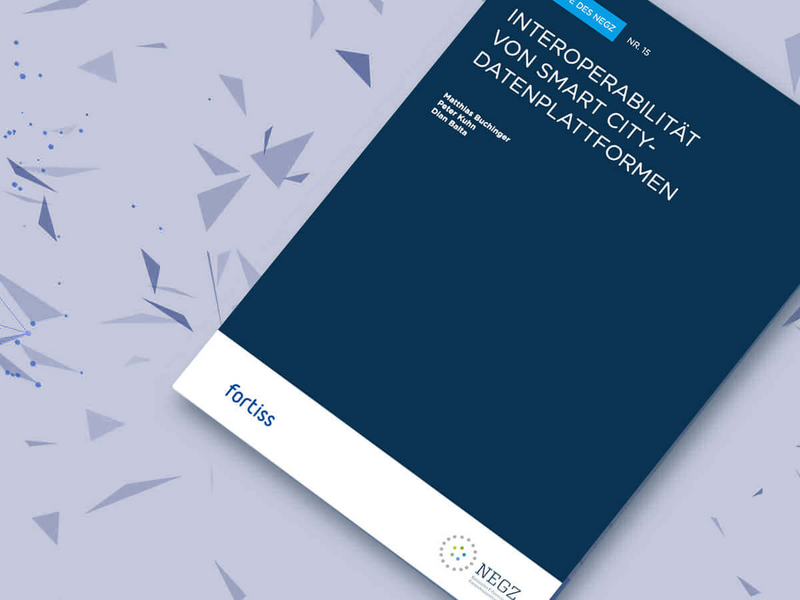In the brief study “The Interoperability of Smart City Data Platforms”, fortiss scientists Matthias Buchinger, Peter Kuhn and Dian Balta are developing concise recommendations for the successful implementation of a digital city infrastructure. The study was commissioned by the National E-Government Center of Competence (NEGZ). The trans-disciplinary NEGZ promotes the establishment of a scientific basis of facts and transfer of knowledge by linking science, government, public service administration and industry.
Smart implementation of digitalization concepts
The digitalization of city infrastructures normally involves linking several existing information and communication technology solutions and assets and integrating them into platforms. The resulting infrastructure is designed to make it possible for public administration services, energy providers, local businesses or the citizens to exchange data, communicate with each other and collaborate productively. Data platforms form the foundation by making it possible to record, store, administer and process data and by providing controlled access.
Herein lies the challenge, since the smart city projects to date have been implemented with platforms designed for a specific task, thus restricting their functionality and making it nearly impossible for the participants to communicate with each other. In addition, data exchange within smart city projects has proven to be extraordinarily complex, plus access to the data sources is highly restricted.
Interoperability as a foundation for success
For this reason, interoperability is a fundamental requirement for collaboration between different systems because it’s essential for the internal city infrastructure, as well as for communication beyond the city boundaries. Data interoperability enables interaction between different systems, technologies or organizations. In addition, adherence to common technical norms and standards must generally be ensured both within and between smart cities.
In order to manage this task, the fortiss authors are drawing up a classification schema for the various levels of interoperability: interface architecture, degree of data openness, role of the city and protection level of the shared data. These key levels will then be used by the fortiss scientists as a basis for discussing the different implementation approaches.
The resulting suggestions for the interoperability of the smart city data infrastructures will help decision-makers and developers to identify concrete, application-relevant issues, select the most promising approaches and ultimately implement successful and workable data platforms for sustainable, functioning smart cities.



